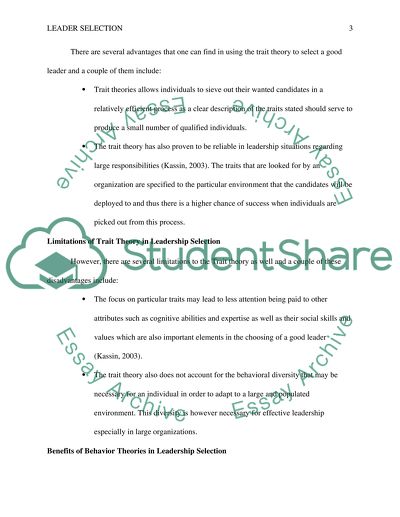Cite this document
(“Topic: Leader Selection Essay Example | Topics and Well Written Essays - 2000 words”, n.d.)
Topic: Leader Selection Essay Example | Topics and Well Written Essays - 2000 words. Retrieved from https://studentshare.org/psychology/1496343-topic-leader-selection
Topic: Leader Selection Essay Example | Topics and Well Written Essays - 2000 words. Retrieved from https://studentshare.org/psychology/1496343-topic-leader-selection
(Topic: Leader Selection Essay Example | Topics and Well Written Essays - 2000 Words)
Topic: Leader Selection Essay Example | Topics and Well Written Essays - 2000 Words. https://studentshare.org/psychology/1496343-topic-leader-selection.
Topic: Leader Selection Essay Example | Topics and Well Written Essays - 2000 Words. https://studentshare.org/psychology/1496343-topic-leader-selection.
“Topic: Leader Selection Essay Example | Topics and Well Written Essays - 2000 Words”, n.d. https://studentshare.org/psychology/1496343-topic-leader-selection.


